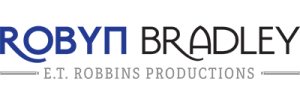Brand Voice vs Tone: What’s the Difference?
Have you ever been on a company’s social media platforms—maybe Facebook, Instagram, X, whatever—and you clicked over to its website and then questioned if you were in the right place because it sounded off?
The problem was probably related to the brand voice, tone, or both.
What the heck do I mean by brand voice vs tone?
Come on in, and let’s discuss it.
What do we mean by brand voice?
Have you ever been in a situation where someone is telling you about something a friend said, and you’re like, “Wait, that doesn’t sound like her.”
This speaks to a person’s voice. We all have a unique way of sounding—a personality—and it comes through in how we communicate.
The same is true with a brand’s voice—or the brand’s personality.
This personality is or should be consistent across all channels—website, emails, social media, print, TV, and radio spots. It should also be consistent with packaging materials—from packing slips to directions—and within the products themselves.
How is a brand voice developed?
Our human personalities are part nature and part nurture. But most big brand voices are custom-designed.
Sure, smaller brands might back into their brand voice. The local acupuncturist might have a kind and caring way, and this evolves into her brand. Everything she communicates has this kind and caring voice.
But bigger brands will often have many meetings about what sort of brand they want to be and what sort of brand voice they want to convey across all media. Some agencies deal only in branding, and as part of this work, they’ll help develop a brand’s voice.
This branding work involves a deep dive into customer personas, competitor research, and brand archetypes. The brand agency will also examine the company’s mission and values.
The result of this work goes into a brand bible—or brand guide. Your brand guide talks about everything from messaging to color palettes and fonts, to the brand archetype, to—you guessed it—the brand voice.
Here’s a recent example of why your brand voice matters—and what can happen if you put something out there that doesn’t sound like your voice.
We’re all familiar with Apple products. This creator brand is all about innovation, and its brand voice has historically reflected this, which is why its recent ad introducing the iPad Pro sparked backlash. The ad, called “Crush,” crushes everything many creators and innovators hold dear. Many people said the ad didn’t reflect the brand’s voice.
Check out the ad below and see what you think.
What do we mean by tone?
Where the brand voice is consistent, the tone is dynamic. The tone you use depends on the situation, whether you’re talking to someone or writing to someone.
For example, when you wish someone a happy birthday on Facebook, your tone sounds cheerful, right?
But your tone when responding to someone who had to put down their beloved dog is quite different. You’ll sound more somber. It’s still your voice—it will still sound like you—but the tone will be different.
The same is true for brands. A brand’s voice should be consistent regardless of medium or situation, but its tone should change depending on the situation.
For example, a brand’s tone when responding to a negative review should differ from the tone it uses when responding to a positive review.
What copywriters and content writers need to keep in mind about voice and tone in their writing.
When working with clients, ask if they have a brand guide. If it does, that guide will likely contain everything you need.
If the client doesn’t have a brand guide, discuss the importance of branding with them. You’ll obviously review the client’s existing assets, like its website and social media accounts. But if they haven’t thought through their brand, this is an opportunity for more work.
“Hey, Awesome Client. The voice on your social media accounts is playful and snarky, but the voice on your website is much more sophisticated. There’s a bit of a disconnect. What’s the voice that you want to convey?”
They might not even realize the disconnect until you point it out.
When writing content for a client, here’s a simple mental checklist to run your copy through. I call it my “brand voice vs tone” checklist:
- Is the content aligned with the brand’s voice?
- Does the tone match the context of the message?
- Am I using any verboten words, phrases, or punctuation?
(Regarding the latter, I have a client who won’t let me use exclamation points in the copy because they don’t feel it jives with the brand voice.)
So there you have it. A quick primer on the difference between brand voice and tone.
Voice is all about the brand’s unique personality. It should be consistent across all media. Tone, on the other hand, is like an emotional dial that you move up or down depending on the situation.
Want to learn more about copywriting and content writing? Here are the two books I recommend to people just getting started. (Note: these are Amazon affiliate links. The products won’t cost you more, but I’ll earn a small commission if you decide to buy them.)


Got a question for the Copy Bitch?
Get in touch or visit my YouTube channel and leave a question in the comments on one of my videos.
